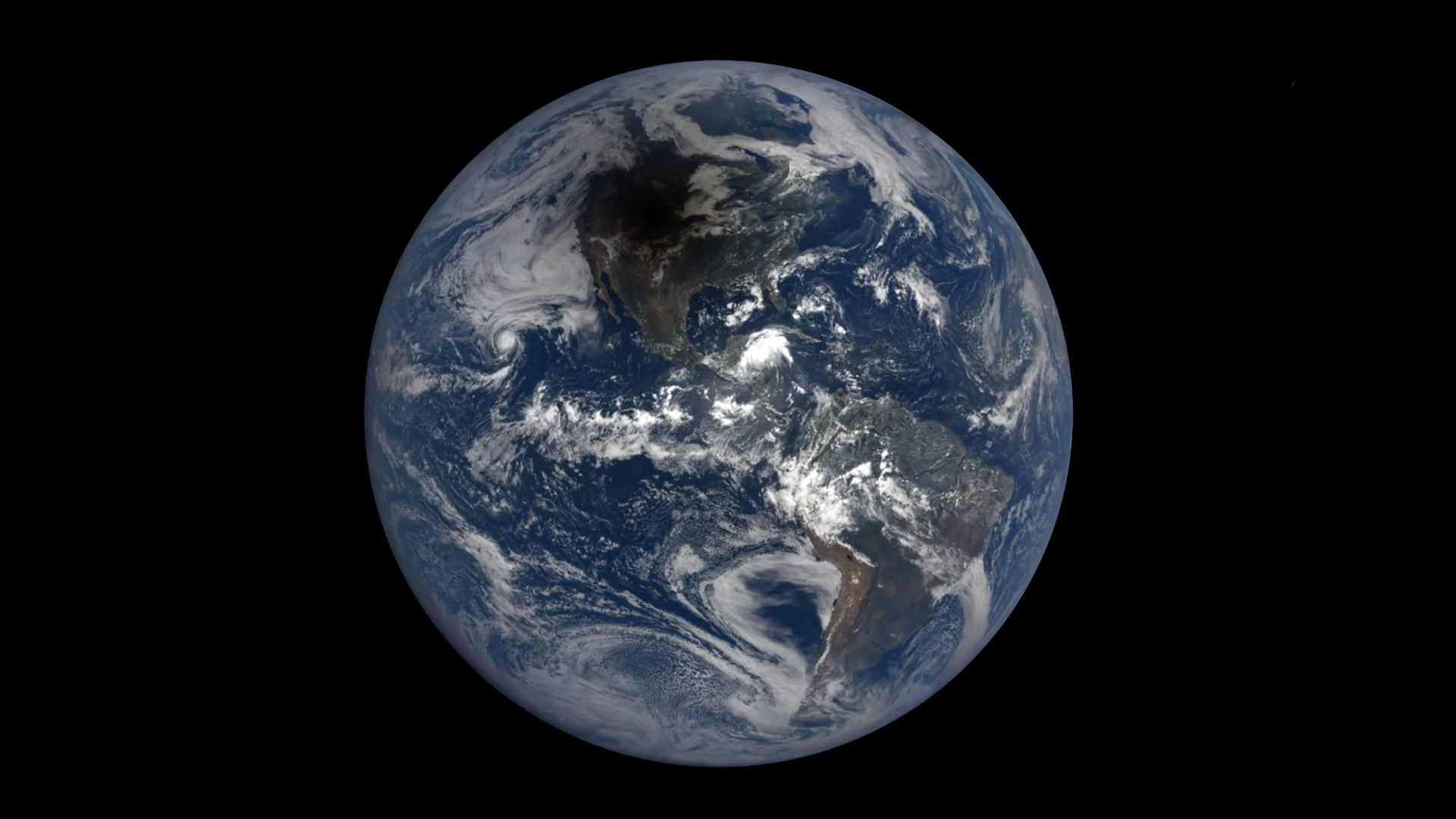See the entire 'ring of fire' eclipse in 4 seconds in stunning satellite videos
The NOAA satellites GOES-East and GOES-West watched as the shadow of the moon darkened the surface of Earth on Saturday, Oct. 14.

The annular eclipse that passed over the Americas on Saturday, Oct.14, was also seen from space by earth-observation satellites.
The eclipse, during which the moon blocked out the center of the sun, causing it to appear as a glowing ring of fire in the sky over Earth, was seen by the National Oceanic and Atmospheric Administration (NOAA) satellites GOES-East and GOES-West.
Rather than the annular eclipse appearing as a fiery golden ring, the NOAA satellites saw a darker and arguably more ominous impression of the event, witnessing a dark shadow sweep over the surface of Earth. The shadow was caused by the moon passing in front of the sun as it traveled along the path of the annular eclipse.
Here is a complete satellite loop of today's eclipse from our GOES-16 satellite! #gawx pic.twitter.com/kXtr7d5ivMOctober 14, 2023
On Saturday, the annular eclipse kicked off over Oregon at around 09:13 PDT (12:13 p.m. EDT, 1613 GMT) before moving across the states of Nevada, Utah, New Mexico, and Texas. From there, the eclipse passed across the Gulf of Mexico to Mexico, then Guatemala, Belize, Honduras, Nicaragua, Costa Rica, Panama, Colombia, and Brazil before the ring of fire disappeared from the skies over the Atlantic Ocean at sunset.
The individual views provided by GOES-16 were posted to X by the National Weather Service (NWS) Atlanta. During the time-lapse footage showing the entirety of the eclipse, the moon's shadow can be seen passing diagonally across the Earth from top left to bottom right.
The GOES-West position is covered by GOES-18, which took over from GOES-17 in January 2023. It also had a view of the annular eclipse as it passed over Earth, albeit from a different angle than GOES-16. The Cooperative Institute for Research in the Atmosphere (CIRA) at Colorado State University posted GOES-West's view of the event's shadow on its X account, showing the shadow of the moon moving from the Western U.S. to South America and around the limb of Earth.
GOES-West caught the annular eclipse as it moved from the western US down to South America. pic.twitter.com/WR2J6E48jFOctober 15, 2023
An eclipse occurs when the moon passes between Earth and the sun when the three are aligned. If the moon is close to Earth, then the lunar disk will completely block the sun in an event called a total eclipse. A partial solar eclipse happens when only part of the lunar disk encroaches on the sun, making the solar disk appear like a "bite" has been taken out of it.
Sign up for the Live Science daily newsletter now
Get the world’s most fascinating discoveries delivered straight to your inbox.
An annular eclipse like the one of Saturday over the Americas occurs when the moon is further from the Earth, something that happens because the moon's orbit is an ellipse rather than a perfect circle, meaning that there are times it is closer to the planet and times it is further away. Because of its distance from the planet, the moon is smaller and thus can't cover the entire disk of the sun and a famous "ring of fire" is created.
This annular was, for many skywatchers, a warm-up for the total solar eclipse that will be visible from the U.S. on April 8, 2024. During this event, which is the first total solar eclipse seen in the U.S. since 2017 and the last until 2044, the moon will completely obscure the sun.
During this total eclipse, rather than sweeping from Oregon to Mexico, the path of the eclipse will run from Mexico through Texas and up to the Northeast of the U.S. and up to Canada.
Originally posted on Space.com.
Robert Lea is a science journalist in the U.K. who specializes in science, space, physics, astronomy, astrophysics, cosmology, quantum mechanics and technology. Rob's articles have been published in Physics World, New Scientist, Astronomy Magazine, All About Space and ZME Science. He also writes about science communication for Elsevier and the European Journal of Physics. Rob holds a bachelor of science degree in physics and astronomy from the U.K.’s Open University











